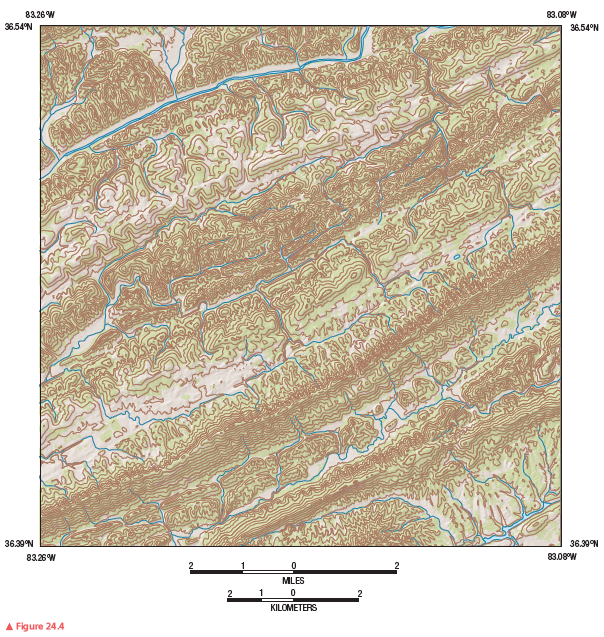The Grinnell Formation in Glacier National Park contains mudcracks that date back nearly 1.5 billion years. How can delicate sedimentary structures such as these be preserved?
What will be an ideal response?
Answer: After the formation of the mudcracks, another depositional event affected the area, bringing in sediment to fill in the cracks.
You might also like to view...
According to our text, rainforest destruction, biodiversity, topsoil conservation, water quality, water quantity, and global climate are associated with
A) industrial beef production. B) community supported agriculture. C) pastoral nomadism. D) urban agriculture. E) biopharming.
What type of geographic feature is the water body called Fish Lake, and how did it form? Use the illustration in Figure 24.3 to identify this water feature.
Figure 24.8 is a portion of the Philipp, Mississippi, 7.5-minute quadrangle in northwestern Mississippi. The Tallahatchie River flows through the landscape from west to east. (Remember to use the topographic map symbol legend inside the front cover of this manual.)
Review Figure 24.4, analyze Figure 24.8 closely, and answer the following questions and completion items about Figure 24.8.


A rapid change in temperature with depth is called a ________.
A. halocline B. photic level C. midwater current D. thermocline E. pycnocline
Turbidity currents that flow are great masses of sediment-laden water that are pulled downhill by ________.
A. earthquakes, storms, volcanic eruptions B. submarine canyons C. landslides D. Earth's rotation E. gravity